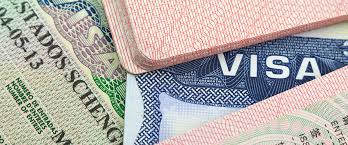In recent years, the process of obtaining a US visa for Spanish citizens has undergone significant changes. Understanding these procedures and requirements is crucial for anyone planning to travel to the United States from Spain. Whether for tourism, business, or study purposes, navigating the visa application process can be complex but manageable with the right information and preparation. This comprehensive guide aims to demystify the steps involved, clarify the types of visas available, and provide practical tips to enhance your chances of securing a US visa for Spanish citizen.
Understanding US Visa Types
Before diving into the specifics, it’s essential to grasp the different types of visas available for Spanish citizens seeking entry into the United States. The most common categories include:
- Tourist (B-2) Visa: This visa is suitable for Spanish citizens traveling to the US for recreational purposes such as tourism, visiting family or friends, or participating in social events.
- Business (B-1) Visa: Intended for Spanish nationals engaging in business activities in the US, including conferences, consultations, and negotiating contracts.
- Student (F and M) Visas: Spanish students pursuing academic or vocational studies in the United States must obtain an appropriate student visa.
- Work (H-1B, L, O, P) Visas: Reserved for Spanish professionals seeking employment or temporary work assignments in the US, each category catering to specific job roles and qualifications.
- Exchange Visitor (J-1) Visa: For individuals participating in approved exchange programs, including students, scholars, and research assistants.
Understanding which visa category suits your purpose is crucial, as each type has distinct requirements and limitations.
Visa Application Process
The process of applying for a US visa as a Spanish citizen begins with completing the online visa application (Form DS-160) through the US Department of State’s Consular Electronic Application Center. Applicants must provide personal information, travel details, and background information, including previous US travel history.
Required Documentation
Alongside the completed DS-160 form, applicants must gather the following essential documents:
- Valid Passport: Spanish citizens’ passports must be valid for at least six months beyond their intended stay in the United States.
- Photograph: Recent, color photographs meeting specific requirements.
- Appointment Confirmation: A printed copy of the appointment confirmation page from the US Visa Information and Appointment Services website.
- Supporting Documentation: Depending on the visa type, additional documents such as invitation letters, proof of financial capability, or evidence of ties to Spain may be required.
Interview Process
After submitting the DS-160 form and paying the non-refundable visa application fee, applicants must schedule an interview at the nearest US embassy or consulate. The interview is a crucial step where applicants provide biometric information (fingerprints) and undergo a brief interview with a consular officer. The officer assesses the applicant’s eligibility based on their purpose of travel, ties to Spain, and ability to fund their stay in the US. US VISA FOR ITALIAN CITIZENS
Tips for a Successful Visa Interview
Preparing for the visa interview is vital for maximizing your chances of approval:
- Documentation: Ensure all required documents are organized and readily accessible.
- Purpose of Visit: Clearly articulate your reasons for visiting the United States and demonstrate ties to Spain.
- Financial Stability: Provide evidence of sufficient funds to cover your stay in the US, including bank statements, employment verification, or sponsorship letters.
- Be Honest and Clear: Answer questions truthfully and concisely, avoiding unnecessary details.
Common Reasons for Visa Denials
Despite thorough preparation, visa denials can occur due to various reasons, including:
- Lack of Strong Ties: Inadequate evidence of strong ties to Spain, such as stable employment, property ownership, or family commitments.
- Incomplete Documentation: Failure to provide required documents or inconsistencies in information provided.
- Previous Immigration Issues: History of overstaying visas or immigration violations.
- Security Concerns: Background checks revealing issues that raise security concerns.
Post-Interview Process
If approved, applicants typically receive their visas via courier within a few days. Upon receiving the visa, carefully review it for accuracy and familiarize yourself with its conditions, including entry and exit dates. If denied, the consular officer will provide a reason for the denial, and applicants may have the option to reapply after addressing any deficiencies.
Conclusion
Navigating the US visa process as a Spanish citizen requires thorough preparation, understanding of visa types, and adherence to documentation requirements. By following this guide and preparing diligently for your visa interview, you can enhance your prospects of securing a visa and enjoying your trip to the United States. Remember, each application is unique, and preparation tailored to your specific circumstances is key to a successful visa application process.

